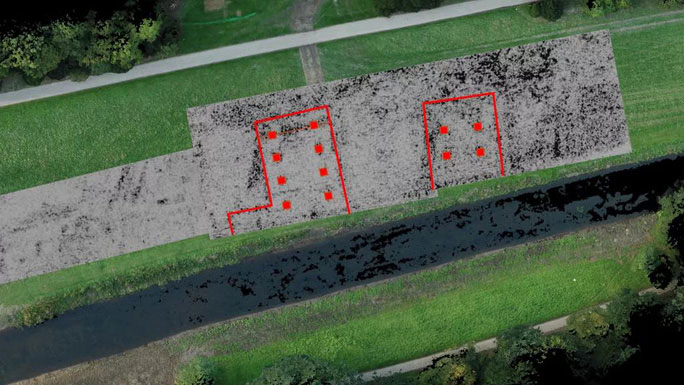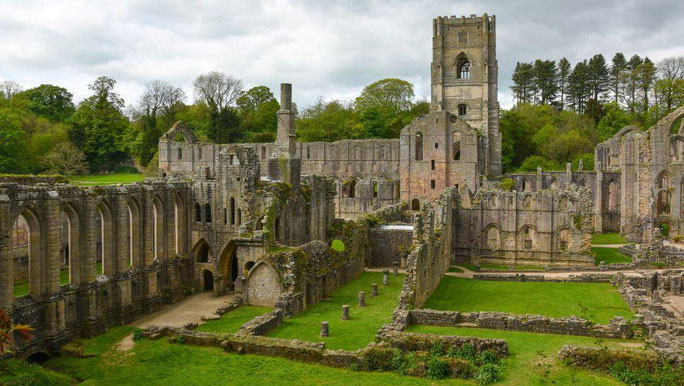An exact structure resembling a bowling alley has emerged in ground-penetrating radar images during the survey of the Fountains Abbey site in Yorkshire, England, astonishing scientists. However, new research indicates that it is not a timeless structure as initially suspected.
Since its discovery through ground-penetrating radar images in a survey conducted in 2014, this bowling alley-like structure has posed a significant question for archaeologists. In a new study led by archaeologist Chris Gaffney from the University of Bradford, the mystery has been unveiled.

The mysterious structure mistaken for a bowling alley – (Photo: University of Bradford).
It is not a bowling alley, and there is no evidence that people in the Middle Ages had such a timeless hobby here. What actually lies beneath the abbey is even more valuable: the remains of an ancient workshop.
According to Live Science, by continuing to use ground-penetrating radar more thoroughly, combined with medieval records that the research team painstakingly gathered, the mysterious site is identified as an ancient tannery, where clothing, furniture, beds, bookbinding, and parchment were produced, which the scribes of the abbey used to copy religious texts.
It seems that the tannery was no longer in use in the later history of the abbey. Evidence suggests it was burned down and buried. Due to the potential damage that excavating this workshop could cause to the beautiful ruins of the abbey above, archaeologists decided to leave it undisturbed underground and to continue mapping it using non-invasive tools to represent the mysteries beneath and around the site in drawings and 3D models.

The beautiful ruins of the abbey – (Photo: Dave Caroll).
The tannery is estimated to consist of two large stone buildings, one of which is 30 meters long and has one floor, along with several auxiliary structures surrounding it.
The Fountains Abbey itself was founded in 1132 AD and flourished for at least 400 years. After King Henry VII dissolved the monasteries, a heritage organization in England took ownership, but many parts of the stone, wood, and lead from the architectural wonder were removed and sold as building materials. Today, the abbey remains a magnificent ruin and is a famous historical site in England.


















































